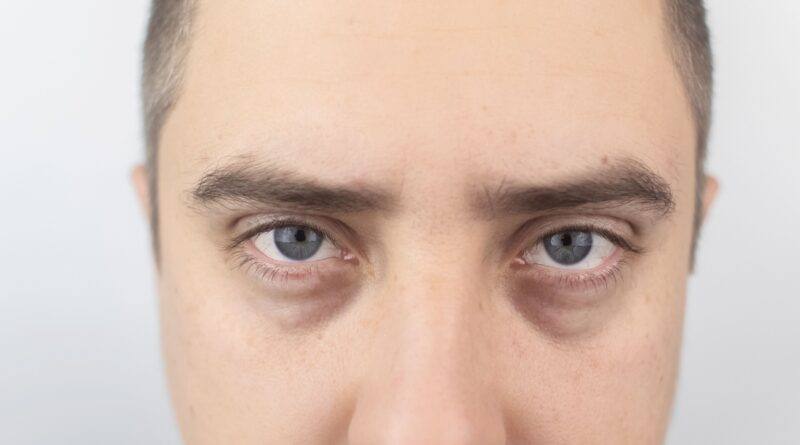Better Eye Care To Overcome Bags And Dark Circles
Health & Wellness | By Naisa V Melwyn | The WFY Magazine – September 2025 Edition |
Eye Care, Made Simple: Understanding Dark Circles and Under-Eye Bags
Dark circles and under-eye puffiness worry people across age groups. They draw comments, make us look tired on video calls, and can chip away at confidence. The good news is that most causes are explainable and manageable. The better news is that you do not need expensive routines to start seeing improvements. A clear plan, steady habits, and the right actives usually bring the best results.
This article sets out what dark circles and “bags” really are, why they appear, who is more at risk, which skincare steps actually help, what lifestyle changes matter, when to see a clinician, and how in-clinic options fit in. It draws on guidance from respected medical sources and dermatology research so you can act with confidence, not guesswork. Where home remedies are popular but evidence is thin, we say so directly.
What are we looking at, exactly
The under-eye area can look darker or puffy for several reasons. Sometimes more than one reason is at work.
- True pigmentation. Extra melanin in the thin eyelid skin leads to a brownish cast, often called periorbital hyperpigmentation. This is common in South Asian and other darker skin tones. Studies in India have reported a high burden of periorbital hyperpigmentation among dermatology outpatients, with young women often represented, although all ages and genders can be affected. (PMC)
- Vascular show-through. Blue, violaceous, or shadowy tones from vessels under very thin skin. This tends to look worse when you are cold, tired, or congested. Authoritative health sites note that visible vessels contribute to the appearance and respond to simple measures like cooling. (Mayo Clinic)
- Shadowing from shape. A hollow along the tear trough or a more prominent orbital rim casts a shadow even when skin colour is normal.
- Puffiness or “bags”. Ageing and genetics can allow fat pads to push forward and tissue to retain fluid, especially overnight. Medical organisations describe this as largely a cosmetic issue, with home measures helping many people and procedures reserved for persistent cases. (Mayo Clinic)
- Triggers that make everything look worse. Allergies, nasal congestion, high-salt diets, dehydration, smoking, heavy alcohol intake, poor sleep, and eye strain are frequent culprits noted by major eye and medical centres. (AAO, Hopkins Medicine)
Key point. Most people have a mix of causes. That is why one “miracle” tip rarely fixes the problem on its own.
Who is more likely to notice dark circles
- People with darker skin tones, including many in the Indian diaspora. More melanin and a tendency to post-inflammatory pigmentation make colour changes more visible. (PMC)
- Those with allergic rhinitis or chronic nasal congestion. “Allergic shiners” are a classic finding in clinical reviews of hay fever and related conditions. (PubMed)
- Families with a history of prominent tear troughs, puffiness, or pigment.
- People who are sleep-restricted or stressed. Observational work has linked poor sleep with darker circles, swelling, and a more fatigued facial appearance. (ScienceDirect)
- People with high-salt diets or dehydration. Water retention and fluid shifts worsen morning puffiness. Leading medical centres list salt intake and hydration as common drivers. (Hopkins Medicine)
If dark circles are new and severe, or arrive with other symptoms like breathlessness, palpitations, or weight change, see your doctor. Occasionally, anaemia, thyroid disease, kidney trouble, or dermatitis sits in the background and needs care.
What genuinely helps at home
The simplest changes often deliver the biggest early wins. These steps are safe, affordable, and backed by mainstream guidance.
1) Cool the area briefly
A cool, damp cloth across closed eyes reduces vascular congestion and swelling. Use for a few minutes, not longer. Health authorities list cold compresses as a first-line tip for both dark circles and puffiness. (Mayo Clinic)
2) Elevate the head for sleep
One extra pillow or a wedge helps fluid drain rather than collect under the eyes. This is a standard suggestion in eye-care advice pages. (AAO)
3) Give sleep its fair share
Aim for regular bedtimes and enough hours for your age. A rested face looks brighter and less puffy, and studies associate sleep loss with darker circles and swelling. (ScienceDirect)
4) Manage allergies and nasal blockage
Treating hay fever and sinus congestion reduces venous pooling and rubbing. Clinical reviews name “allergic shiners” as a hallmark of allergy. (PubMed)
5) Watch the salt and the late-night drinks
High salt keeps fluid where you do not want it. Alcohol disrupts sleep and dehydrates you. Large hospital sites include both as causes of morning bags. (Hopkins Medicine)
6) Daily sunscreen and sunglasses
Eyelid skin is thin. Ultraviolet light deepens pigmentation and accelerates collagen loss. Mineral sunscreens are often better tolerated near the eyes. This is a core dermatology principle to prevent worsening of periorbital pigmentation. (British Association of Dermatologists)
Do common “kitchen cures” work
You will hear about tea bags, cucumber slices, aloe, potato juice, rose water, almond oil, and honey. Here is a balanced view.
- Cold tea bags. Cooling helps puffiness. Caffeine causes blood vessels to constrict and can reduce oedema, so tea can add a small benefit over a plain cold compress. Evidence in the literature supports the vasoconstrictive effect of topical caffeine and its usefulness for puffy, dark under-eyes, although study sizes are modest. (PMC)
- Cucumber slices and rose water. Both are chiefly cool, moist compresses. Cooling is the active part. If your skin is sensitive, keep contact brief and avoid fragrance-heavy rose waters. Authoritative medical pages still endorse cooling as a simple home measure. (Mayo Clinic)
- Aloe vera gel. Moisturises and soothes. Helpful for dryness and mild irritation. Limited direct evidence for pigmentation.
- Almond oil and honey. Gentle occlusive hydration. Evidence for lightening pigment is weak. Useful as a night-time moisturiser if you tolerate nuts and have no allergies.
- Potato juice. Frequently promoted online for “natural bleaching”. High-quality evidence is lacking. If you try it, patch test first since raw plant juices can irritate.
Bottom line. Cooling works. Caffeine has plausible and published support. The rest may help comfort and hydration but should not replace proven routines.
Ingredients with better evidence
Eye creams are not magic, yet the right actives, used consistently, often make a visible difference. A recent review of eye-area actives found that several ingredients improve brightness, colour, or puffiness. (PMC)
- Caffeine. Reduces puffiness through vasoconstriction and fluid shift. Often paired with green tea derivatives like EGCG. (PMC)
- Vitamin C. Brightens and supports collagen. Stable forms near 10 percent in leave-on products are common. (PMC)
- Niacinamide. Helps uneven tone and strengthens the skin barrier. It also pairs well with vitamin C. (PMC)
- Vitamin E and antioxidants. Offer extra defence in a high-exposure area. (PMC)
- Hyaluronic acid and peptides. Hydrate, soften fine lines, and improve the look of thin skin.
- Retinoids (retinal or low-strength retinol). Encourage cell turnover and collagen. Start slowly to avoid irritation, and keep application a fingertip below the lash line.
Always patch test, especially around the eyes. Apply a rice-grain amount, tap gently with the ring finger, and keep actives away from the waterline.
A simple, sensible routine
Morning
- Rinse and pat dry.
- Thin layer of vitamin C or niacinamide serum around, not into, the crease.
- Caffeine gel or eye cream for de-puffing.
- Mineral sunscreen, and sunglasses outdoors.
Night
- Cleanse gently.
- Hydrating eye cream with hyaluronic acid and peptides.
- Two or three nights a week, a pea-sized amount of retinoid for the whole face, never right up to the lash line.
- If pigment is the main issue, ask your clinician about azelaic acid or specialised pigment-correctors suitable for the eye contour.
Weekly
- Short, cool compresses on early mornings after saltier dinners or poor sleep.
- Allergy control when pollen counts rise.
When skincare is not enough
If hollowing or persistent bags are driving the look, topical products will have limits. Trusted medical organisations outline the in-clinic choices. Selection depends on your anatomy, skin type, and expectations. (Mayo Clinic, AAO)
- Fillers. Hyaluronic acid gel softens a deep tear trough and reduces shadow. Results are immediate but operator skill is critical in this area.
- Chemical peels or laser for pigment and texture. Superficial peels and specific lasers can help melanin-driven darkness and fine lines in expert hands.
- Blepharoplasty. Surgery to remove or reposition fat, tighten muscle, and trim excess skin. Health systems describe it as elective in most cases, with typical aftercare including elevation, cold packs, and sun protection. Insurance rarely covers it when the concern is cosmetic alone. (nhs.uk, Mayo Clinic)
Ask about downtime, risks, and how results age. Darker skin tones need clinicians experienced in pigmentary disorders to avoid post-procedure darkening.
What to avoid
- Rubbing your eyes. Worsens pigment and broken vessels.
- Harsh scrubs and strong acids on the thin eyelid skin.
- Unsupervised steroid creams. They thin the skin and can raise eye-pressure risk.
- Unverified “bleaching” recipes near the eyes. Irritation often makes pigment worse.
Red-flag signs that need medical review
- A new, one-sided bulge or swelling that persists.
- Pain, redness, heat, or discharge.
- Sudden change in vision, double vision, or light sensitivity.
- Rapidly increasing pigmentation without a clear trigger.
Eye specialists and large medical centres advise professional assessment when swelling is severe, persistent, or associated with visual symptoms, or when dark circles arrive suddenly with other health changes. (Mayo Clinic)
A note for the Indian diaspora
Periorbital hyperpigmentation is widely reported in Indian and South Asian populations and can start young. That does not mean it is permanent. Consistent sun protection, allergy control, careful use of brightening actives, and attention to sleep and salt intake do help. Clinic-based options exist for stubborn cases, but good home care remains the bedrock.
Published work from Indian cohorts underscores how common the issue is and why tailored plans for darker skin types matter. (PMC)
Quick reference: what works, what might, what to skip
Works
- Cold compresses for puffiness. (Mayo Clinic)
- Head elevation for sleep. (AAO)
- Caffeine, vitamin C, niacinamide, hydration, daily sunscreen. (PMC)
- Allergy management and salt moderation. (Hopkins Medicine)
Might help
- Aloe for comfort, tea bags as a cool caffeinated compress. (PMC)
Skip or use with caution
- Potato juice and “natural bleaching” around the eyes. Irritation risk is real and evidence is thin.
- High-strength acids or peels at home. The eyelid is not the place to experiment.
The takeaway
There is no single cause and no single cure. Start with the basics that almost always help: a short cool compress on puffy mornings, a steadier sleep routine, less salt, allergy control, and sunscreen every day. Add a simple eye routine built around caffeine in the morning and hydration plus a gentle retinoid schedule at night. Give it eight to twelve weeks. If hollows or bags still dominate, speak to a qualified clinician about fillers, lasers, or blepharoplasty. The aim is not a perfect edit of your face. It is to help you look rested and well.
© The WFY Magazine | Naisa V Melwyn: The WFY Bureau Desk |
Sources for further reading
- Mayo Clinic and Cleveland Clinic pages on dark circles and under-eye bags, including home care and when to seek treatment. (Mayo Clinic)
- American Academy of Ophthalmology guidance on bags under the eyes and practical tips. (AAO)
- Dermatology literature on periorbital hyperpigmentation and effective eye-area actives. (PMC)
- Clinical reviews on allergic shiners and the role of allergy control. (PubMed)
- Sleep restriction research linking poor sleep to darker circles and swelling. (ScienceDirect)
Disclaimer: This article is for general information for The WFY readership. It is not a medical diagnosis or a treatment plan. Always consult a qualified healthcare professional for concerns about your eyes, skin, or health. If you notice sudden swelling, pain, redness, or changes to vision, seek medical help without delay.




